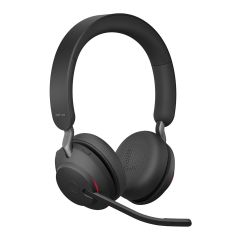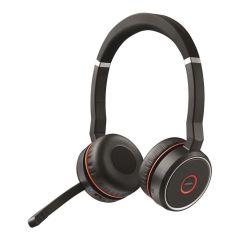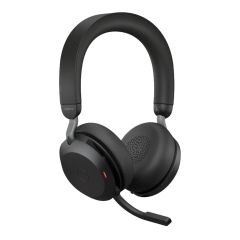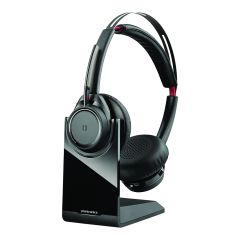How Do Bluetooth Headsets Work?
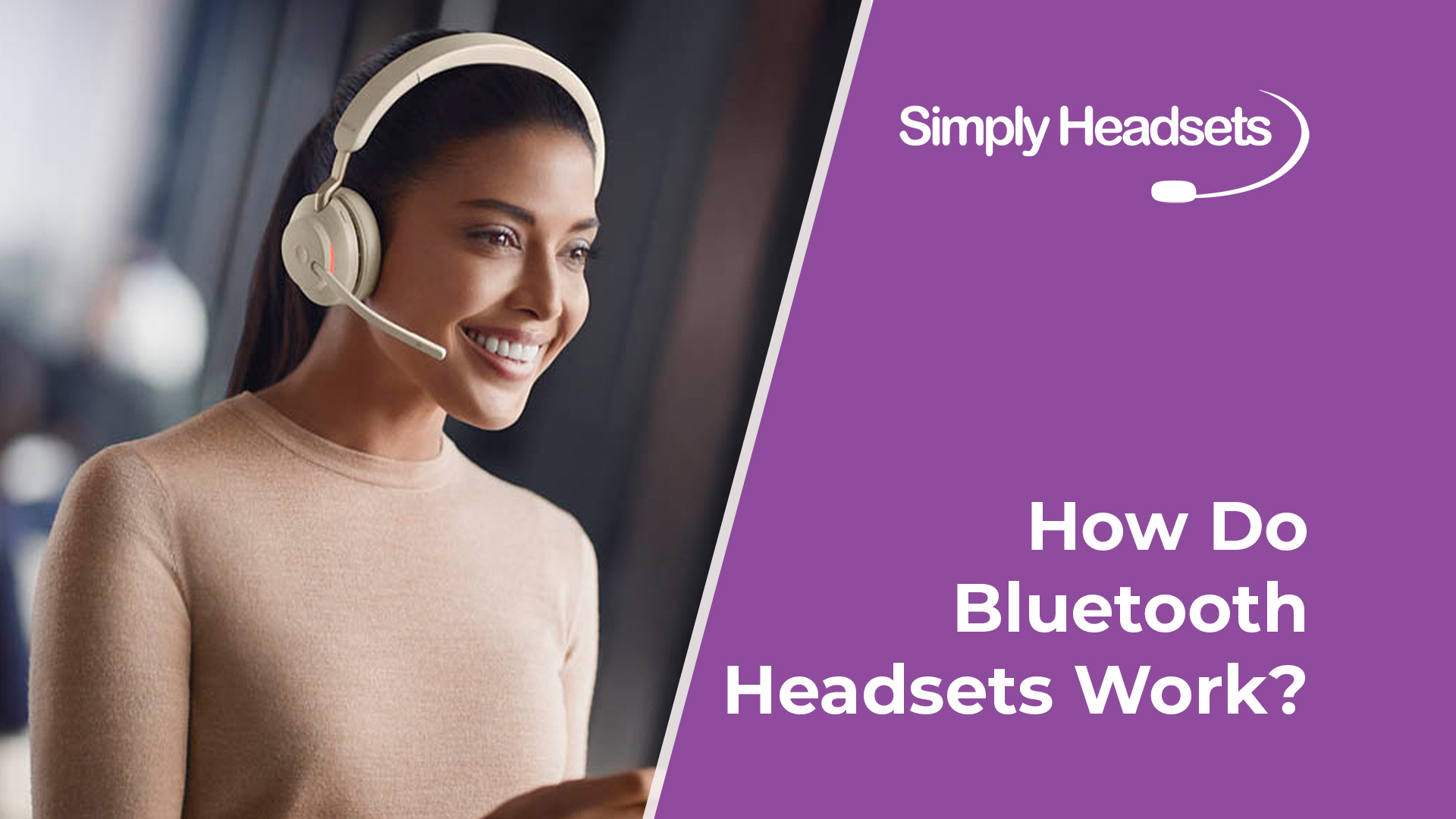
It’s 2024 and Bluetooth is everywhere you look. Bluetooth is especially popular in the headset world for the freedom and convenience the technology provides. But while most people know what Bluetooth is, how many people know how it actually works? At Simply Headsets we love to geek out on technology and understand its inner workings. Even more than that, we love to share that knowledge with our customers.
After this Bluetooth crash course you will know exactly how Bluetooth headsets work and will have no shortage of conversation starters for your next office gathering or party! So gather ‘round and let us explain everything there is to know about Bluetooth headsets and how they actually work.
Bluetooth may seem complicated, but it’s really not. We’re going to dive deep into what Bluetooth technology is, how it relates to headsets, whether it is safe or not, and of course, how the flip it works. That is what you came here for after all.
Post Contents [hide]
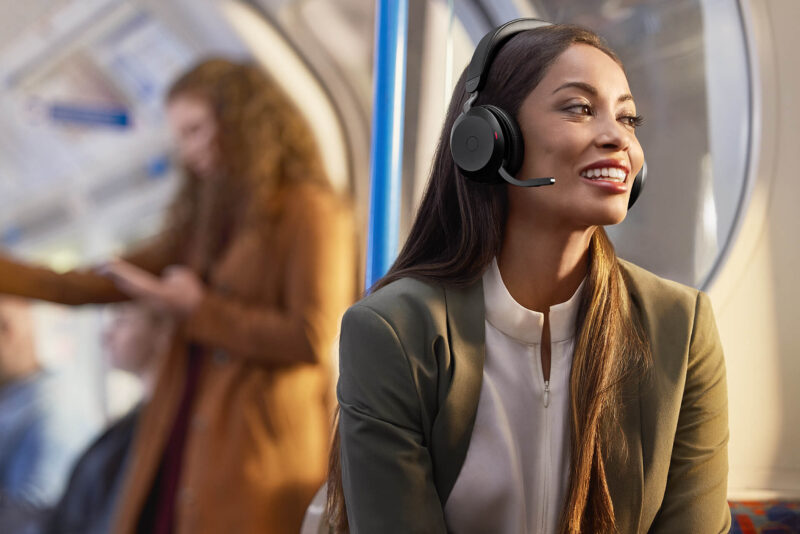
What is Bluetooth?
The simple answer is Bluetooth is a short-range wireless technology that allows devices to talk to each other without needing any wires getting all tangled up in the process. In short, Bluetooth uses radio waves to connect to devices instead of wires.
The geeky answer is that Bluetooth is a packet based protocol with a master/slave relationship (kinky!) that sends and receives data via a 2.4GHz wireless link. The Bluetooth Core system consists of an RF transceiver, baseband and protocol stack and offers services that enable the connection of devices and the exchange of a variety of data classes between these devices.

Is Bluetooth Safe?
Lots of people want to know if it’s safe to be around Bluetooth signals. And we get it. A Bluetooth headset is going to be on your head or around your neck most of the day, and if you’ve heard the myths, you might be afraid that Bluetooth will pump radiation into your brain and turn you into a shrunken head. Well fear not. That will never happen to you. Your brain and the head that holds it will thankfully remain totally unaffected by the radio transmissions of Bluetooth signals (phew!).
Bluetooth does emit low levels of non-ionizing radiation, but the key here is that the radiation is non-ionizing. No need for alarm, non-ionizing radiation is a low frequency radiation that doesn’t have the ability to change or damage human cells or DNA. On the other hand, ionizing radiation is of a high frequency and can have adverse effects on humans. You’ll typically find this type of radiation in X-Rays, radioactive waste, tanning beds and direct sunlight, but not in Bluetooth devices.
To put to rest the myth that Bluetooth is unsafe, the Food and Drug Association (FDA) claimed that routine exposure to low levels of nonionizing radiation is “harmless to humans”.
Glad we got that out of the way!
Are Bluetooth Headsets Safe to Wear?
Bluetooth headsets are absolutely safe to wear. The only thing you need to think about when wearing a Bluetooth headset is how cool you look (and remembering to charge it overnight!)

So How Do Bluetooth Headsets Actually Work?
Bluetooth headsets work the same way that wired headsets do, except for one key difference: the way they receive audio signals. While wired headsets receive audio signals via the cables that connect from the headset to your mobile phone or computer, Bluetooth headsets receive audio signals wirelessly via (you guessed it) Bluetooth.
For Bluetooth headsets to wirelessly communicate with your devices, they first need to be paired, which we will go over in the below section on how to connect a Bluetooth headset.
We mentioned the master/slave dynamic of Bluetooth earlier, so let’s discuss it in a little more detail. Once your headset is paired the network of connected devices forms a ‘piconet’, which is a term used to describe the master/slave relationship between devices.
With the case of Bluetooth headsets, the headset will be the slave and the device you are connecting it to will be the master. The master device provides the synchronisation reference and the resulting ‘piconet’ is how Bluetooth devices communicate with each other.

The term piconet comes from the word ‘pico’, which means very small, and it’s called this because Bluetooth only allows 7 devices to connect to a single master device. It is one of the defining characteristics (or limitations, depending on how you want to look at it) of Bluetooth technology.
A piconet may sometimes be referred to as a personal area network (PAN) due to its small range of about 10 metres, which is roughly the size of an office breakroom.
Fun fact: Bluetooth was only meant to be a placeholder name and was actually planned to be called PAN or RadioWire, but the name Bluetooth caught on and it stuck. The name derives from King Harald Bluetooth, who ruled Denmark from c. 958 - c. 986 and united the tribes of Denmark into a single kingdom. The founders chose the name as they believed that it would unite devices the same way that King Harald united Denmark. The Bluetooth logo is actually a Nordic rune merging King Harald Bluetooth’s initials HB.
Now that you have a basic understanding of how Bluetooth works, some insight into its master/slave relationship and how the name Bluetooth has Viking origins (which is important!), let’s get super technical and explain the process in more detail.

How to connect a Bluetooth Headset
Connecting a Bluetooth headset to your computer or mobile phone is super simple and straightforward. The process of connecting a Bluetooth device is known as ‘pairing’. For example, if you want to connect your Bluetooth headset to your mobile phone or your computer, you need to pair the headset with the device you want to wirelessly connect to.
To connect your Bluetooth headset to your device of choice you simply need to go to the Bluetooth menu on either your mobile phone or computer, ensure that Bluetooth is switched on, and then ask the device to search for Bluetooth devices to connect to. Your headset should automatically pop up and all you have to do is select it and confirm that you want to pair with this device.
Congratulations, your Bluetooth headset is now connected and you can start using it wirelessly! The great news is you only have to do the pairing process once, after it’s been paired your device will remember the Bluetooth headset and automatically connect to each other anytime they are powered on and within Bluetooth range.
Why you should choose a Bluetooth Headset
If you want to go wireless and require a simple and secure solution, then a Bluetooth headset is the way to go. These days most devices in your office or at home (and even your car) support Bluetooth connections. A Bluetooth headset will offer you the ultimate flexibility in connecting to a number of different devices and giving you a taste of wireless freedom.
What are the best Bluetooth Office Headsets to buy in 2024?
The best Bluetooth office headsets in our opinion are the Jabra Evolve2 65 and the Jabra Evolve 75 . We picked these headsets because they offer the best combination of sound quality, comfort, features and price.
Jabra Evolve2 65
- WORKS WITH - PC + MOBILE
- 360* Busylight
- Premium headset
The Jabra Evolve2 65 spoils you for choice as it comes in both stereo and mono versions, as well as USB-A, USB-C and Microsoft Teams certified versions. It also has a version with or without a charging stand and comes in two exciting colours: black and beige. Jabra went all out with this headset and believe us when we say it’s a premium headset. It has amazing sound quality, both for calls as well as for listening to music, and it’s super comfortable for long wearing sessions thanks to its memory foam headband and extra cushioning on the earcups.
The Jabra Evolve2 65 features Passive Noise Cancelling due to the design of its ear cups that naturally block out sound and it also features a noise cancelling mic, so not only will you not hear your co-workers in the background, whoever is on the other end of the call won’t either. Lastly, the Evolve2 65 has a busy light on both the front and back of the earcup, so your colleagues in front AND behind can see if you’re busy or not!
Jabra Evolve 75
- WORKS WITH - Mobile + PC
- Active Noise Cancelling
- Busy lights
- Wideband audio
- Use for work and play
The Jabra Evolve 75 is a pro Bluetooth headset that features Active Noise Cancelling (ANC) technology, which blocks out more noise than Passive Noise Cancelling headsets such as the Jabra Evolve 65. If you want to learn more about the differences between Active and Passive Noise Cancelling, be sure to check out our Definitive Guide to Noise Cancelling Headsets. The Evolve 75 is an excellent Active Noise Cancelling headset that’s perfect for blocking out external noise and getting into the zone! Whether that’s in the office whilst you’re on an important call, or during your morning commute listening to your favourite tunes.
Jabra Evolve2 75
- WORKS WITH - Mobile + PC/Mac
- Dongle and charge via - USB-A
- Advanced Active Noise Cancelling
- Hide-Away Mic Boom
The Jabra Evolve2 75 is the updated model of the trusty Evolve 75. It features larger ear cups, improved Active Noise Cancelling technology in both the microphone and ear cups, as well as better audio quality and a longer wireless range. This Bluetooth headset has a stylish, ergonomic design, with a comfy headband and soft ear cups as well as a foldable mic for when it's not in use.
Plantronics B825 Voyager Focus
- WORKS WITH - PC + Mobile
- ACTIVE Noise Cancelling
- Charging stand included
The Plantronics B825 Voyager Focus is a solid Bluetooth headset with excellent sound quality and improved bass balance, so you can use it for listening to music as well as on work calls. These are designed for all-day wear, so you can be rest assured that they will stay comfortable even after extended sessions of wearing them. It also features Active Noise Cancelling so you can eliminate background noise and distractions while you're busy at work or on a call. Perfect for noisy work from home office setups as well!
Shop our Bluetooth Headsets
If you want to buy a Bluetooth headset then we have you covered. Head over to Simply Headsets and shop our Bluetooth headsets for computers, mobile phones and desk phones today!.
FAQ
How do I answer calls with a Bluetooth headset?
We often get asked how to answer calls with Bluetooth ,and the answer is quite simple. Once your phone is paired with your Bluetooth headset it will beep each time your phone rings. When that happens all you have to do is press the button that's found on the side of your headset and it will automatically answer the call. You don't need to touch or do anything with the phone as your headset can answer the call on its own.
How do I end calls with a Bluetooth headset?
To end calls with a Bluetooth headset you simply press the same button that you used to answer the call. Pressing this button once on a call will end the call straight away.
Is Bluetooth secure?
Bluetooth is in most cases more secure than Wi-fi. In order to share data you need to first allow a Bluetooth connection to occur, known as pairing, which provides a measure of security for you and your devices.
What is the difference between a wireless headset and a Bluetooth headset?
Both are wireless headsets, however the way they connect to your devices as well as how they handle range and interference is different. Bluetooth headsets connect to your devices via radio waves, whereas wireless headsets connect via a base station. Connecting to a base station gives wireless headsets a longer range, but you give up the portability of a Bluetooth headset.
What is the best Bluetooth headset for calls?
The best Bluetooth headset for calls is the Jabra Evolve2 75, which is a step up from the best selling Jabra Evolve 75. It has Active Noise cancelling in the ear cups and microphone as well as excellent sound quality and wireless range. It is also comfortable to wear for long periods thanks to its padded headband and soft ear cups.




